Facilities/Instrumentation
The Urban Environmental Biogeochemistry Laboratory encompasses several different laboratories within Smith Hall.
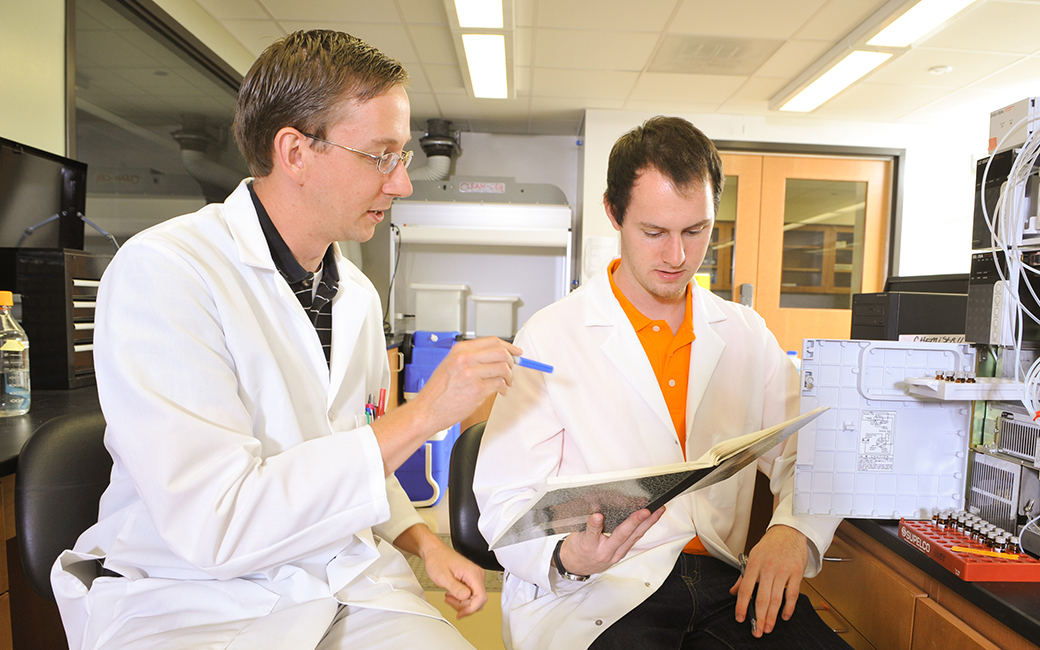
1st floor labs
In 2010, the UEBL was awarded a $1.4M National Science Foundation ARI grant (# 0963263) to renovate space on the first floor of Smith Hall. Supplemented by funds from TU, these renovations have recently been completed and the renovated space opened for use in October 2012. This space provides the ideal infrastructure for the multi-disciplinary approach to science that is the foundation of all UEBL activities. Renovated spaces include a sample intake lab, a clean sample processing lab, an instrument lab and two exposure labs. The arrangement of the facilities creates a logical work flow from sample intake through instrumental analysis. The design of the facilities incorporates modern laboratory best practices and an appealing openness accomplished with a liberal use of glass replacing opaque concrete walls, creating a more welcoming and safe environment for faculty and student research. The renovations also emphasize energy efficiency including the use of non-incandescent lighting systems with motion sensors, and well-balanced HVAC systems.
Instruments housed in the new lab suite include the ICP-MS, XRF, CN analyzer, CHNOS elemental analyzer, discrete analyzer, and ion chromatograph.
4th floor lab
The 4th floor lab houses the GBC Optimass 9500 ICP-TOFMS, including the LSX-213 laser ablation system. Student workstations provide computer access for research projects. A metals-free clean room within this lab allows for clean sample preparation.
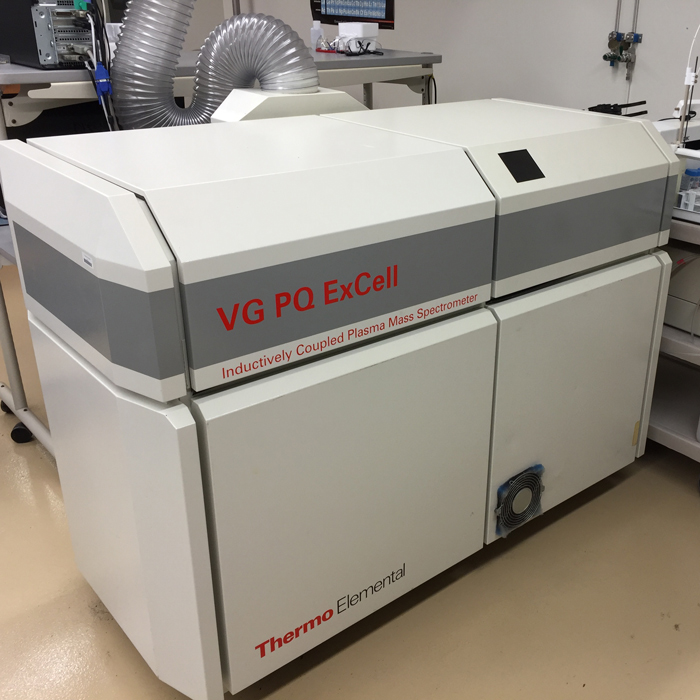
Thermo (VG) PQ Excell ICP-MS
The Thermo (VG) PQ Excell ICP-MS system measures concentrations of inorganic elements as well as isotopic ratios. A CETAC ASX-520HS auto-sampler allows for unattended operation.
ICP-MS Operating Instructions (PDF)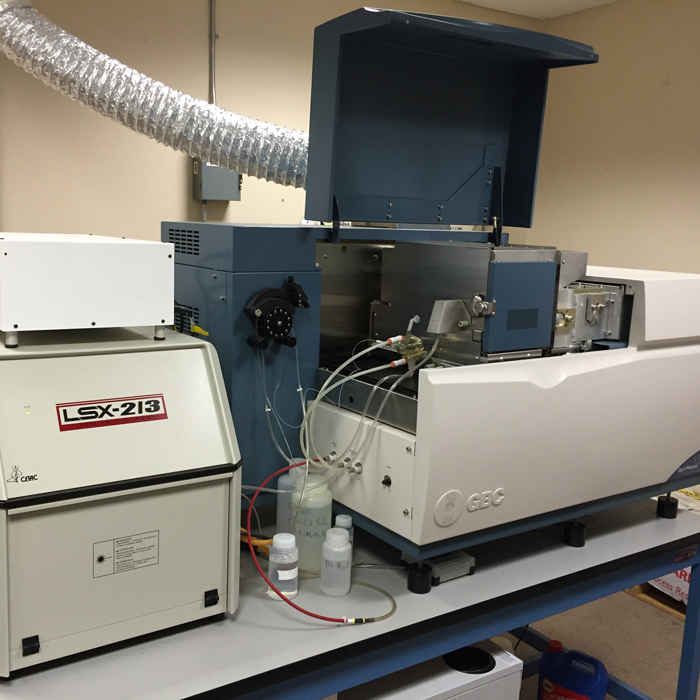
GBC Optimass 9500 ICP-TOFMS with CETAC LSX-213 laser ablation system
The GBC Optimass 9500 ICP-TOFMS measures concentrations of inorganic elements as well as isotopic ratios. A CETAC LSX-213 laser ablation system allows for the measurement of solid samples, and a GeoMed Analytical Cryocell 10 coupled to the laser ablation system allows for the measurement of solid biological samples.
ICP-TOFMS Operating Instructions (PDF)Seal AQ1 Discrete Analyzer
The Seal AQ1 Discrete Analyzer is a versatile instrument that can quantify a wide variety of elements and/or compounds in liquid samples. Currently we have methods for determining silica, orthophosphorus, total phosphorus, nitrogen from ammonia, and nitrogen from nitrate + nitrite .
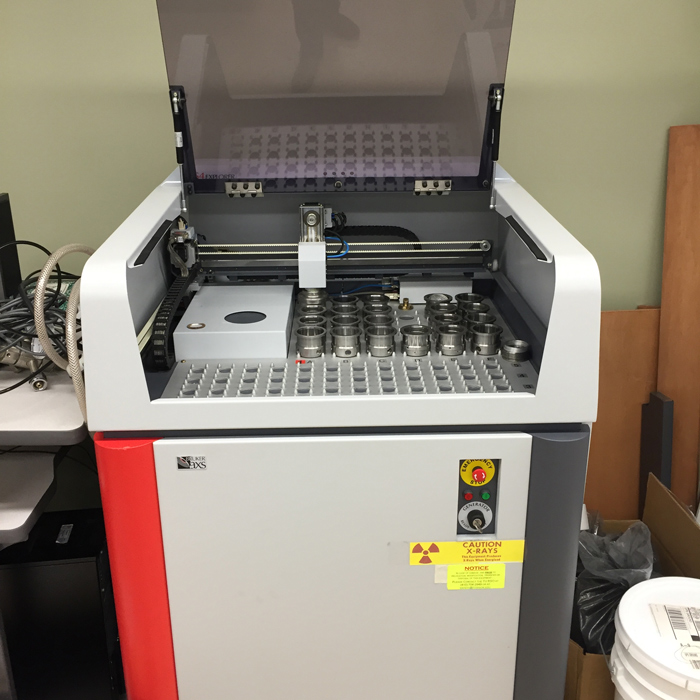
Bruker AXS S4 Explorer XRF
The Bruker AXS S4 Explorer wavelength-dispersive X-ray fluorescence spectrometer measures elemental concentrations. Samples are either dissolved and made into a glass fusion bead or pressed as pellets for analysis. Almost any material that can be prepared in this manner can be analyzed by the XRF. A built-in auto-sampler allows for unattended operation.
S4 Explorer Operating Instructions (PDF)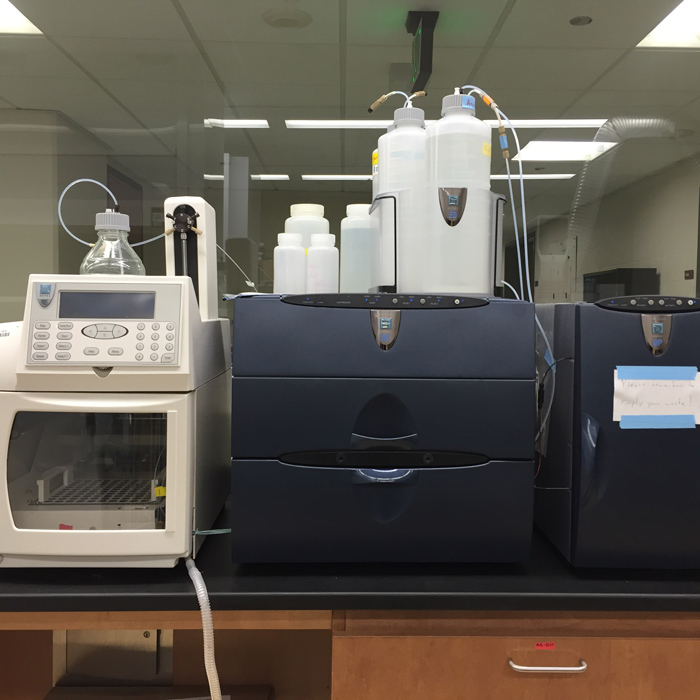
Dionex ICS-5000 ion chromatograph
The Dionex ICS-5000 ion chromatograph characterizes and quantifies anions, such as chloride, nitrate, and sulfate, and cations, such as sodium, potassium, and calcium, in liquid samples. A Dionex AS auto-sampler allows for random-access sampling and selection of injection volume.
IC Operating Instructions (PDF)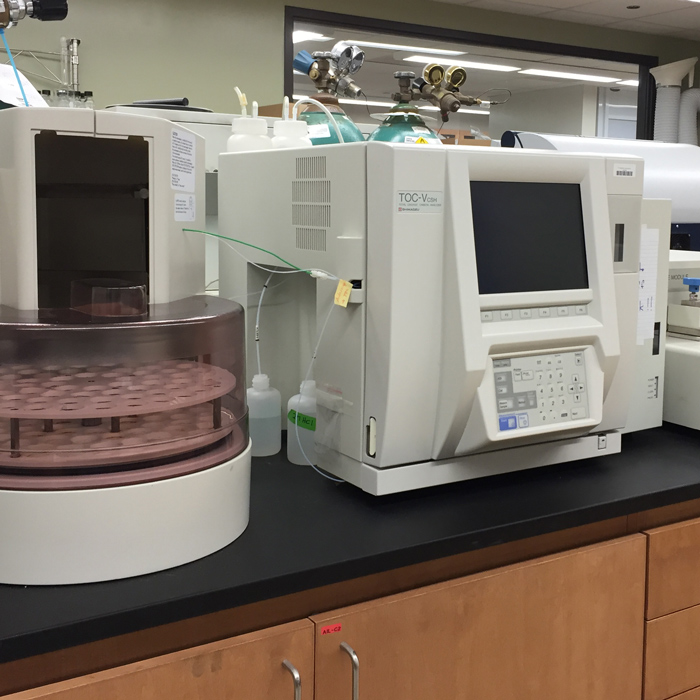
Shimadzu TOC-Vcsh NC analyzer
The Shimadzu TOC-Vcsh NC analyzer quantifies total nitrogen, total carbon, and total organic carbon in liquid or solid samples.
NC Analyzer Liquid Operating Instructions (PDF)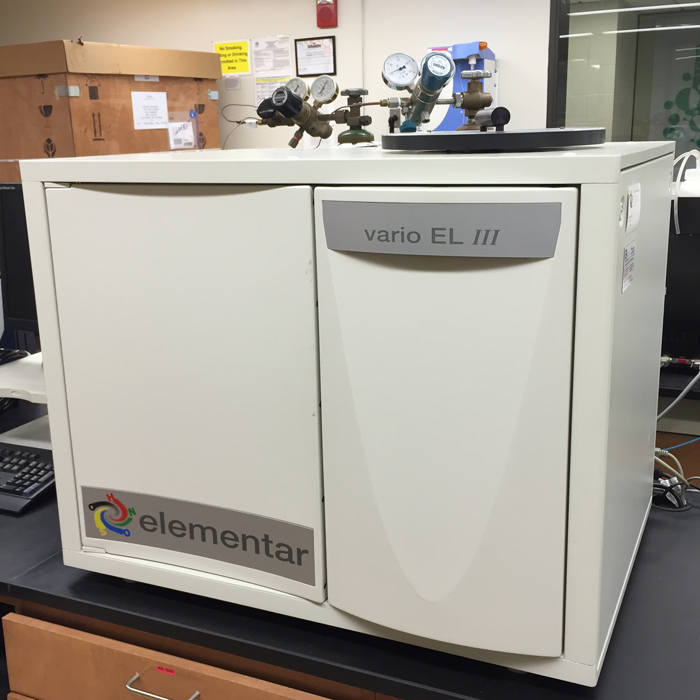
Elementar Vario EL III CHNOS Elemental Analyzer
The Elementar Vario EL III CHNOS Elemental Analyzer quantifies total carbon, hydrogen, nitrogen, oxygen, and/or sulfur in solid samples.
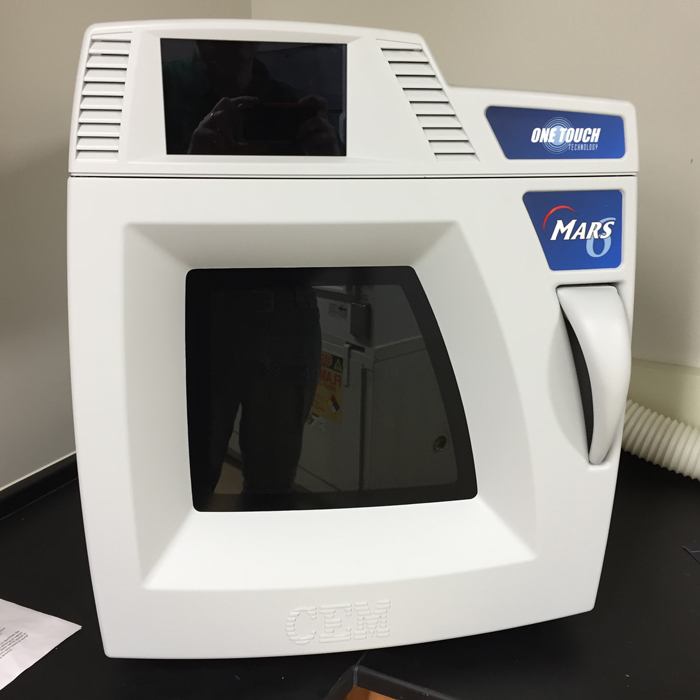
CEM Mars 6 Microwave Digestion System
The CEM Mars 6 Microwave Digestion System digests solid and liquid samples for further analysis.
Microwave Operating Procedure (PDF)